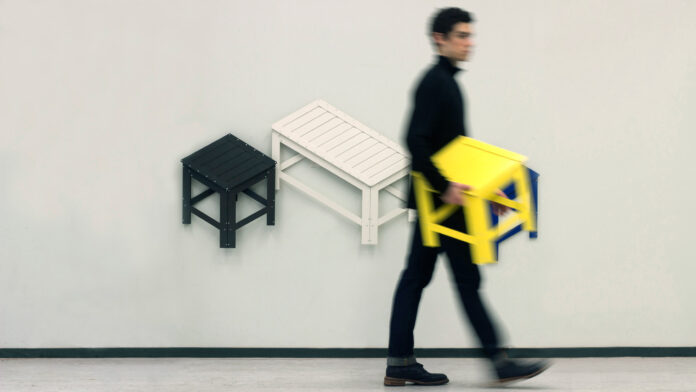South Korean designer Jongha Choi has created a collection of space-saving, collapsible furniture that can be transformed from flat, “two-dimensional” forms into functional, three-dimensional objects (Hitti, 2019).
The collection, called De-dimension, is comprised of a stool and a table made from aluminium. Each object can be folded down into a flat, seemingly two-dimensional form, and easily stowed away or hung on the wall like a picture (Hitti, 2019).
The process of folding and unfolding the pieces offers a literal and physical representation of turning a two-dimensional image, like an initial design sketch, into a finalised, three-dimensional product (Hitti, 2019).
The designer’s work poses the question why, in our current world, we don’t interrogate the confinement of an image to a flat surface. De-dimension is therefore Choi’s way of achieving a more stereoscopic experience of the flat image (Hitti, 2019).
He began to develop a mechanism that would allow him to collapse the furniture down into isometric forms, starting with simple drawings of furniture on paper, which were then cut out and transformed into paper models (Hitti, 2019).

Analysis
This design from Jongha Choi is an amusing example of space-saving furniture. The collapsible design creates an eye-striking visual effect of transitioning from 2D to 3D. When the chairs are folded and hanging on the wall, it almost feels like a hanging art piece or photograph, and you’ll not expect they are chairs that you can sit on. Another fascinating detail is how effortless the transformation from one stage to the next is. From 2D to 3D, art pieces to furniture, just one simple motion is needed. This design inspired me by showing how collapsible design can serve different purposes in different stages. When designing my project, I’ll also try to avoid overcomplicated steps for the users and focus on the balance between functionality and aesthetics.




